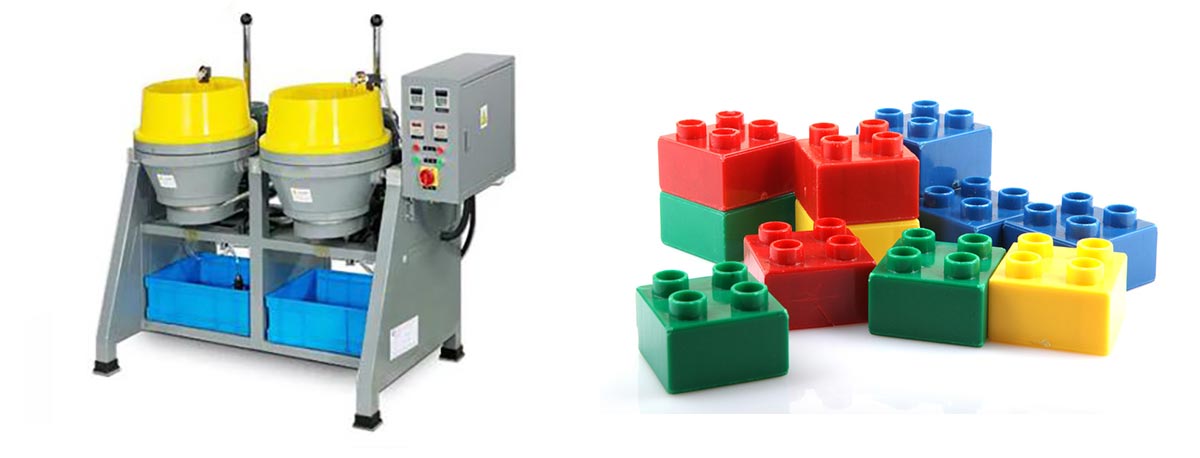

Polishing pads play a vital role in achieving smooth, polished surfaces across various industries. These tools are indispensable for tasks requiring precision and efficiency. Recent innovations, such as nanotechnology integration and self-adaptive pads, have enhanced their performance. Eco-friendly manufacturing methods, including biodegradable materials, align with sustainability goals.
The demand for polishing pads continues to grow. For instance, the automobile industry anticipates steady growth, while the pharmaceutical sector expects significant expansion. The table below highlights projected growth rates for 2025:
| Application Segment | Expected Growth Rate (2025) |
|---|---|
| Pharma and Healthcare | Significant growth expected |
| Automobile Industry | Steady increase anticipated |
| Electrical Appliances | Moderate growth projected |
| Others | Variable growth rates |
Whether for industrial polishing machines or car polishing pads, selecting the right type ensures optimal results.
Key Takeaways
- Polishing pads help make surfaces smooth in many industries. Picking the right one gives the best results.
- Foam pads are useful for light to medium polishing jobs. They work evenly and are simple to use.
- Wool pads are great for tough polishing tasks. They handle hard surfaces well and stay cooler, good for soft finishes.
- Microfiber pads mix cutting strength with a nice finish. They often skip the need for extra polishing, saving time.
- Always choose a pad that matches the surface and finish you want. This reduces mistakes and improves the final look.
Types of Polishing Pads
Polishing pads come in various types, each designed to meet specific polishing needs. Understanding their characteristics, applications, and advantages helps users select the right pad for optimal results. Below is an in-depth look at foam, wool, and microfiber polishing pads.
Foam Polishing Pads
Characteristics
Foam polishing pads are versatile and available in two main types: open cell and closed cell.
- Open cell foams allow air to pass through, which helps dissipate heat and keeps the pad cooler during use.
- Closed cell foams are denser and absorb less polish, enabling faster correction times.
Each type interacts differently with polishing compounds, influencing performance and working time.
| Material | Aggressiveness | Performance Characteristics |
|---|---|---|
| Foam | Less aggressive | Generates more friction-induced heat than wool pads. |
Applications
Foam polishing pads are ideal for light to moderate polishing tasks. They work well on automotive surfaces, furniture, and other delicate materials. These pads are commonly used with industrial polishing machines for achieving smooth finishes.
Advantages
- Foam pads are lightweight and easy to handle.
- They provide consistent results across various surfaces.
- Their versatility makes them suitable for both beginners and professionals.
Wool Polishing Pads
Characteristics
Wool polishing pads, often referred to as woolpads, are designed for heavy cutting tasks. They are made from pure lambswool or synthetic blends, with strands ranging from 1” to 2” long. This construction allows them to carry significant amounts of cutting compound, making them highly effective for removing deep defects.
Applications
Wool pads excel in high-cut polishing applications. They are preferred for tough paint surfaces, gelcoats, and other challenging materials. Professional detailers often use wool buffing pads for heavy-duty tasks.
Advantages
- Wool pads offer aggressive cutting power.
- They generate less heat than microfiber pads, making them suitable for soft lacquers.
- Their ability to carry large quantities of compound enhances efficiency.
Microfiber Polishing Pads
Characteristics

Microfiber polishing pads combine cutting power with finishing ability. Their dense composition and short pile microfiber strands effectively cut paint surfaces while carrying a high quantity of cutting compound.
Applications
Microfiber buffing pads are versatile and work well with dual-action and rotary polishers. They address moderate paint imperfections and are often used for car polishing pads to achieve a fine finish.
Advantages
- Microfiber pads balance cutting power and finish quality.
- They often eliminate the need for a follow-up polishing step.
- Their versatility makes them suitable for various polishing tasks.
Hybrid Polishing Pads
Characteristics
Hybrid polishing pads combine materials like foam, microfiber, and wool to deliver the benefits of each. This innovative design allows them to perform multiple functions in one step. For instance, a pad with a foam core and a microfiber face can cut through paint imperfections while leaving a glossy finish. These pads are versatile and suitable for various surfaces, making them a popular choice among professionals. Their ability to balance cutting power and finishing quality streamlines the detailing process.
Applications
Hybrid polishing pads are ideal for tasks requiring both aggressive correction and fine finishing. They work effectively on automotive surfaces, including paint correction and restoration. These pads are also compatible with industrial polishing machines, making them suitable for large-scale projects. Their adaptability ensures they can handle diverse materials, from soft lacquers to harder coatings.
Advantages
- Hybrid pads reduce the need for multiple buffing pads, saving time and effort.
- Their multi-material construction enhances durability and performance.
- They provide consistent results, even on challenging surfaces.
- These pads are compatible with various polishing compounds, increasing their versatility.
Specialty Polishing Pads
Characteristics
Specialty polishing pads are designed for specific applications, unlike general-purpose pads. Each type caters to unique needs, ensuring optimal performance. For example:
- Glass polishing pads gently remove imperfections without damaging the surface.
- Metal polishing pads are robust and abrasive, ideal for polishing metal surfaces.
These pads often feature unique materials and designs tailored to their intended use.
Applications
Specialty polishing pads excel in niche tasks. Glass polishing pads are perfect for restoring clarity to windshields and mirrors. Metal polishing pads handle tasks like removing oxidation and scratches from stainless steel or aluminum. These pads are also used in industries requiring precision, such as aerospace and jewelry manufacturing.
Advantages
- Specialty pads deliver superior results for specific tasks.
- Their tailored designs minimize the risk of surface damage.
- They enhance efficiency by addressing unique challenges effectively.
- These pads extend the range of applications for car polishing pads and industrial polishing machines.
How to Choose the Right Polishing Pad
Surface Material Considerations
Selecting the correct polishing pad depends heavily on the surface material being polished. Different materials require specific types of buffing pads to achieve optimal results without causing damage. For example:
- Glass polishing pads are ideal for automotive windows and mirrors. They work with specialized glass polishes to restore clarity and shine.
- Metal polishing pads are designed for chrome, aluminum, and stainless steel. These pads effectively remove oxidation and stains, leaving a brilliant finish.
- Tyre buffing pads focus on rejuvenating rubber surfaces by scrubbing away contaminants and preparing them for dressings.
Understanding the material ensures the polishing pad matches the surface’s needs. This approach minimizes risks and enhances the final outcome.
Aggressiveness Levels
The aggressiveness of a polishing pad significantly impacts the final finish. Buffing pads range from highly aggressive woolpads to ultra-soft foam buffing pads. Each level serves a specific purpose:
- Aggressive pads, such as wool pads, remove material quickly but may leave fine imperfections.
- Medium-aggressive pads, like microfiber pads, balance cutting power and finishing ability.
- Softer pads, including foam polishing pads, create a glossy finish with minimal material removal.
The table below categorizes polishing pads by aggressiveness:
| Type of Pad | Aggressiveness Level | Description |
|---|---|---|
| Wool Pads | High | Suitable for heavy cutting but may be too aggressive for soft paints. |
| Microfiber Pads | Medium | More aggressive than foam pads, ideal for moderate corrections. |
| Foam Pads | Low | Gentle polishing, creating glossy finishes with minimal paint removal. |
| Finishing/Jewelling Pads | Low | Designed for final stages, enhancing gloss without removing material. |
Choosing the right level ensures the pad aligns with the surface condition and desired finish.
Compatibility with Machines and Compounds
Polishing pads must be compatible with the polishing equipment and compounds used. For instance:
- Wool pads work best with rotary or dual-action machines.
- Foam pads vary based on machine type. Reticulated foam suits dual-action machines, while non-reticulated foam fits rotary machines.
- Microfiber pads are exclusive to dual-action machines due to their high cutting power.
Pad size also matters. Smaller pads (3”-5”) are ideal for tight spaces, while larger pads (6” or more) cover broader areas efficiently. Additionally, the compound used influences pad performance. Sprayable compounds pair well with softer pads for heavy corrections, while microfiber cutting pads excel with harder clear coats. Matching the pad, machine, and compound ensures effective and safe polishing.
Matching Pads to Desired Finishes

Selecting the right polishing pad ensures the desired finish is achieved efficiently. Each type of pad offers unique characteristics that make it suitable for specific results. Understanding these differences helps users make informed decisions.
For high-gloss finishes, foam pads are often the best choice. Their soft texture minimizes the risk of scratches, making them ideal for final polishing stages. These pads work well with industrial polishing machines to create a mirror-like shine on automotive paint or furniture surfaces.
When heavy correction is required, woolpads provide the necessary aggressiveness. Their ability to remove deep imperfections makes them suitable for restoring older or heavily damaged surfaces. However, users should follow up with softer buffing pads to refine the finish and eliminate any micro-scratches left by the woolpad.
Hybrid pads offer a versatile solution for achieving both correction and finishing in one step. These pads combine materials like foam and microfiber, allowing them to cut through imperfections while leaving a smooth finish. They are the best matched pads for professionals seeking efficiency without compromising quality.
Specialty pads cater to unique needs. For example, glass polishing pads restore clarity to windows, while metal polishing pads remove oxidation from stainless steel. Matching the pad to the material ensures optimal results and prevents damage.
Users should also consider the polishing compound and machine compatibility. For instance, microfiber pads paired with dual-action machines excel in moderate corrections. Meanwhile, foam pads with rotary machines deliver precise finishes. Choosing the right combination enhances performance and ensures the polishing pads achieve their full potential.
Tip: Always test the pad on a small area before proceeding with the entire surface. This practice ensures the pad is suitable for the material and finish.
Conclusion
Polishing pads play a crucial role in achieving professional results across various surfaces. Each type serves a unique purpose: foam pads excel in finishing tasks, wool pads handle heavy cutting, and specialty pads address niche applications like glass or metal polishing. Matching the pad to the task ensures optimal performance and enhances the final shine and gloss.
Selecting the right pad also impacts long-term efficiency. Foam pads offer versatility, while wool pads work best with high-speed polishers for deep corrections. Properly sized pads and compatible compounds further improve finishing quality and reduce costs over time.
Maintaining polishing pads extends their lifespan. Cleaning pads after each use prevents residue buildup. Storing them in open bags avoids moisture damage. Alternating between multiple pads during tasks minimizes wear and tear. These practices ensure consistent results and maximize the value of industrial polishing machines.
Tip: Investing in durable pads and following maintenance routines saves money and ensures superior finishes for years.
